|
PRESS COVERAGE
Please click on a link below to view the Press Coverage online:
|
|
"The Search for Dark Matter Is Dramatically Expanding" by Charlie Wood
Quanta Magazine - November 23, 2020
WIMPS may be down, but they’re not out. A nearly 4-ton tank of xenon will start a two-year run in March at the Gran Sasso National Laboratory in Italy. And a team in South Korea, the Cosine-100 collaboration, seeks to check a controversial claim from another Gran Sasso experiment called DAMA. In that experiment, an array of sodium iodide crystals has logged exactly the kind of seasonal variations one might expect if Earth is presenting different faces to the “wind” of dark matter it passes through. “They have an annual modulation, no ifs, ands or buts. But what is it?” said Katherine Freese, an astrophysicist at the University of Texas, Austin. “We can’t figure it out.”
|
|
|
"10 Female Scientists We Look Up To: From Early Twentieth Century to Present-Day"
BBC America - July 17, 2020
Katherine Freese is a theoretical physicist and her area of focus is dark matter. Yes, just like Sheldon from The Big Bang Theory. She is currently a professor at The University of Texas, Austin. She was one of the first women to earn a BA in Physics from Princeton University. She also has an MA from Columbia University and a PhD from the University of Chicago.
|
|
|
"Light the Tower: World-Changing Longhorns"
UT University Communications - May 11, 2020
The Longhorns being honored during this special Tower lighting include: Katherine Freese – Elected to National Academy of Sciences
|
|
|
"Katherine Freese elected to the National Academy of Sciences"
Stockholm University - May 5, 2020
Astrophysicist Katherine Freese, professor at the Department of Physics, Stockholm University, and at The University of Texas at Austin, has been elected to the US National Academy of Sciences.
|
|
|
"Three UT Austin Faculty Elected to National Academy of Sciences" by Marc Airhart
UT News - April 27, 2020
Freese, who holds the Jeff and Gail Kodosky Endowed Chair in Physics, works on a wide range of topics in theoretical cosmology and astroparticle physics. She has been working to identify the dark matter and dark energy that permeate the universe as well as to build a successful model for the early universe immediately after the Big Bang. She is author of the book The Cosmic Cocktail: Three Parts Dark Matter, published in June 2014. She received her Ph.D. in physics from the University of Chicago in 1984. She received an NSF Presidential Young Investigator Award (1990), a Simons Foundation Fellowship in Theoretical Physics (2012) and the Lilienfeld Prize from the American Physical Society (2019).
|
|
|
"News from the National Academy of Sciences"
National Academy of Sciences - April 27, 2020
Freese, Katherine; Jeff and Gail Kodosky Professor of Physics, department of physics, The University of Texas at Austin; professor, Stockholm University
|
|
|
"Inspiring messages from super-women in STEM" by Urmila Marak
Mand Labs - May 7, 2020
Mand Labs celebrates the intellectual power, strength and success of women who have dared to dream and achieve. We asked some of these women in STEM over email to share their words of wisdom on this UN International Day of Women and Girls in Science.
|
|
|
"The Universe before our time" by Stefanie Reichert
Nature - December 2, 2019
Florian Kühnel and Katherine Freese studied the impact of quantum fluctuations of the scalar field driving inflation on primordial black hole formation. They calculated the power and mass spectra for a field with inflection points, and found that primordial black hole formation is significantly enhanced. Hence, the effects of quantum fluctuations need to be taken into account when studying the formation of primordial black holes and their suitability as dark matter candidates.
|
|
|
"Testing DAMA" by Jim Daley
Symmetry Magazine - August 13, 2019
A confirmation that DAMA is indeed seeing dark matter would open another gold mine of sorts. Katherine Freese, a theoretical astrophysicist at the University of Texas, first proposed the technique of searching for an annual modulation of the dark matter signal in the galactic halo in 1986. Freese says that if the DAMA signal is confirmed, physicists would then have to start exploring the properties of the particles making the signal. “You would try to figure out what is the mass of the particle, what is the scattering strength of the particle, and what is the interaction [with the detector], in detail,” she says. “And then we’ll keep going with other experiments until we figure out exactly what its details are.”
|
|
|
"Dark matter particles won’t kill you. If they could, they would have already" by Lisa Grossman
ScienceNews - July 25, 2019
"As wacky as this might sound, physicist Katherine Freese thought these calculations were worth doing. “This study is fun,” says Freese of the University of Michigan in Ann Arbor. “Looking for macros in already existing detectors, such as the human body, is a good idea.” Though she wasn’t involved in the macro research, she and colleagues did a similar thought experiment with WIMPs in 2012. “But weak interactions are so weak as to be harmless” to human bodies."
|
|
|
"Dark Stars: Could be the Seed of Supermassive Black Holes" by Simone Caporali
Everyeye.it - July 20, 2019
Le stelle oscure sono oggetti che potrebbero essere esistiti nell'universo primordiale, della cui esistenza non siamo totalmente certi, che se potrebbero rappresentare una possibile risposta all'esistenza dei buchi neri supermassicci. Non vi basta? Potrebbero essere alimentate e potenziate dalla materia oscura.
|
|
|
"If this type of dark matter existed, people would be dying of unexplained ‘gunshot' wounds" by Juanita Bawagan
Science - July 19, 2019
The Case Western team is not the only group of researchers trying to harness new ways to detect dark matter. Freese has developed paleo-detector experiments that would be sensitive enough to detect the traces of WIMPs in ancient minerals. However, rocks could also show signals of heavier dark matter—in more obvious ways. If macros collide with rock, they would shoot straight through, melting a cylinder of rock that would quickly resolidify into new forms. When light-colored granite is melted, for example, the melted rock hardens as a channel of dark obsidianlike stone.
|
|
|
"Dark stars: The seeds of supermassive black holes?" by Jake Parks
Astronomy - July 19, 2019
The early universe was a very different place than it is now. But it may have been the perfect environment for a strange class of giant, puffy stars that used dark matter as fuel.
|
|
|
"Interview with Million STEM"
Million STEM - July 9, 2019
"Many women in STEM think they are not good enough. They think they have been awarded a position not because they are qualified but because they are lucky. This is never true."
|
|
|
"Physicists Propose Hunting for Signs of Dark Matter in Ancient Minerals" by Ryan F. Mandelbaum
Gizmodo - February 26, 2019
"Now, scientists are preparing to hunt for signatures of dark matter particles in the Earth itself.
It might sound a little farfetched—but this strategy has some advantages over some current dark matter searches, which rely on massive, expensive, custom-built facilities. 'We’re not going to build anything,'' study author Katherine Freese, theoretical astrophysicist and professor at the University of Michigan, told Gizmodo. 'That’s the beauty of it all.'"
|
|
|
"Why the Best Place to Find Dark Matter May Be in a Rock" by Rebecca Boyle
Quanta Magazine - January 7, 2019
“We’re always rooting around for alternative ways to do things,” said Katherine Freese, a theoretical physicist at the University of Michigan and architect of the ideas behind some of the existing detectors in operation.
A subterranean paleo-detector would work in a manner similar to current direct-detection methods, according to Freese and her colleagues. Instead out outfitting a lab with a large volume of liquid or metal to observe WIMP recoils in real time, they would look for fossil traces of WIMPs banging into atomic nuclei. As nuclei recoil, they would leave damage tracks in some classes of minerals.
|
|
|
"Astrophysicist Katherine Freese and Colleague’s Latest Theory About Dark Stars Made Astronomy Magazine's Cover Story"
LSA Physics - December 13, 2018
Dark stars may help solve a long-standing mystery concerning how supermassive black holes — like the one believed to reside at the center of the Milky Way, shown here — formed in the early universe.
|
|
|
"A controversial sighting of dark matter is looking even shakier" by Emily Conover
ScienceNews - December 5, 2018
"Performing an experiment made with the same material as DAMA is important, says Katherine Freese of the University of Michigan in Ann Arbor. 'The fact that they’ve got a working sodium iodide detector is huge.'' But, Freese says, what’s really needed to check DAMA’s claims is for COSINE to search for an annual change."
|
|
|
"We Asked 105 Experts What Scares and Inspires Them Most About the Future" by Becky Ferreira
Motherboard, Vice - December 5, 2018
"Fear: Climate change. At this rate, I‘m sad to think what the world will look like a hundred years from now. I won‘t be alive but maybe my son will. I don‘t want him to have to move to Mars.
Hope: Humans are very smart. We can think not only of solutions to problems but also are capable of remarkable insights and inventions. The same drive that pushes us to explore our Earth, to head into space, and to think about the Cosmos, has given us the brainpower to survive and I hope it always will." |
|
|
"Traces of dark matter might be lurking in ancient rocks on Earth" by Jonathan O'Callaghan
Wired - December 3, 2018
The hunt for dark matter particles to date has mostly focused on real-time detection. But certain minerals could contain historical records of these particles stretching back millions of years.
|
|
|
"Dark matter's shadowy effect on Earth" by Michael R. Rampino
Astronomy - April, 2018
Earth’s periodic passage through the galaxy’s disk could initiate a series of events that ultimately lead to geological cataclysms and mass extinctions.
|
|
|
"Dark stars come into the light" by Mara Johnson-Groh
Astronomy - September 26, 2018
Though only a handful of scientists are currently dedicated to studying these objects, Freese expects the field to grow in the future. “We’ve made a prediction, so if you see something that looks like that, then the motivation for studying dark stars will go through the roof,” she says.
|
|
|
"Hunt for dark matter turns to ancient minerals" by Anil Ananthaswamy
Nature - July 09, 2018
“Researchers using sophisticated detectors sunk deep underground have searched for signs of dark matter for decades. But now, Katherine Freese, a physicist at the University of Michigan in Ann Arbor, and her colleagues suggest that minerals such as halite (sodium chloride) and zabuyelite (lithium carbonate), can act as ready-made detectors.”
|
|
|
"Signal from age of the first stars could shake up search for dark matter" by Adrian Cho
Science - February 28, 2018
“'However, it's too early to rule out a more mundane explanation for the unexpectedly strong absorption,' cautions Katherine Freese, an astrophysicist at the University of Michigan in Ann Arbor. 'Is [this scenario] the only way to explain this? Of course not.'”
|
|
|
"50 Top Women in STEM"
by James A. Barham, The Best Schools - February 1, 2018
"Freese’s main area of research has been on the dark matter/dark energy problem. In particular, she has made several proposals for ways to detect dark matter experimentally, which have led directly to the IceCube Neutrino Observatory at the Amundsen–Scott South Pole Station in Antarctica, and a worldwide consortium of efforts to detect a dark matter “wind” as the Earth and the solar system orbit the Milky Way galaxy. Her work has definitely ruled out the MACHO (massive compact halo object) theory of dark matter, thus giving support to WIMPs (weakly interacting massive particles). In more recent theoretical work, Freese has advanced several conjectures regarding dark matter, including a model known as the Cardassian expansion which replaces dark matter with a modification of Einstein’s field equations, and another hypothesis known as 'dark stars,' which if confirmed would be a new type of star powered by dark matter annihilation rather than fusion."
|
|
|
"15 top science & tech leaders offer surprising predictions for 2018"
by David Freeman, Denise Chow and Prachi Bhardwaj, NBC News MACH - December 31, 2017
"Last October, an amazing neutron star merger event was discovered via gravitational waves from the Laser Interferometer Gravitational-Wave Observatory (LIGO), and 1.7 seconds later in 70 different detectors in all different wavelengths of light. That means gravity travels at a speed very close to that of light. Combining all this information has already been used to rule out many models of gravity beyond Einstein’s relativity. As more events are discovered, we will learn more about relativity, and about the numbers of neutron stars and black holes of different masses. The black holes already discovered, up to 30 times the mass of the sun, are a surprise, and we will learn what other masses are out there."
|
|
|
"The Future is Dark" by Elizabeth Wason
University of Michigan LSA - October 23, 2017
“It’s 85 percent of all matter,” says theoretical physicist Katherine Freese about dark matter in the universe. “We’ve got to find out what the hell it is, obviously.”
|
|
|
LSA's "Summer School" Reading List Includes The Cosmic Cocktail
University of Michigan LSA - June 19, 2017
Physicists take dark matter seriously, and The Cosmic Cocktail author and LSA physicist Katherine Freese is no exception. In her recent book, Freese combines hardcore research with funny anecdotes to show what some scientists do when their academic conference shuts down for the day. Freese herself hangs out with the queen of Sweden, theorizes about the building blocks of dark matter, and remembers the poetic beauty (but freezing swimming temperatures) of British lakes. What’s dark matter made of? Well, we don’t know yet, but Freese prepares us for the discovery that everyone swears will happen in the next few short years.
|
|
|
"A Mind Bending Physics Theory: Did Dark Stars Form The Universe?" by Mr. Peppermint
Onedio - May 24, 2017
Thirty years ago, her theories about an unseen glue that helped shape the Universe led to the building of underground particle accelerators around Earth, such as the machines at Cern in Europe. And the particle they are looking for? They are called Wimps, and according to Freese, stars made of this illusive stuff may even have helped create the cosmos, billions of years ago.
|
|
|
"Notable Women in the Physical Sciences"
The Educational Card Project - April 30, 2017
Freese featured as a card in the Educational Card Project.
|
|
|
"Virtual Special Issue on Women in Physics 2017"
by Kate Keahey, Elsevier - March 8, 2017
The article featrures "Cardassian expansion: a model in which the universe is flat, matter dominated, and accelerating" - Katherine Freese, Matthew Lewis
|
|
|
"19 Women Leading Math and Physics"
by Natalie Wolchover, Quanta Magazine - March 8, 2017
"'In my entire career I’ve always been aware of being a woman in physics,' the theoretical astrophysicist Katherine Freese told Quanta in 2014. When she moved to Sweden that year to head up the Nordic Institute for Theoretical Physics, she was drawn to the cultural acceptance of women in science there. 'On the entire planet, as far as I can tell, the best place for a woman to do science is Scandinavia,' she said."
Freese's former graduate student, Janna Levin, is also featured.
|
|
|
"17 Top Female Scientists Who Have Changed the World" by Colleen Curry
Global Citizen - February 10, 2017
"Freese is a trailblazing modern scientist who studies dark matter, including studying “dark stars” in the universe, something that has never been observed directly by a human. She’s the Director of Nordita, an institute for theoretical physics in Stockholm."
|
|
|
"11 Surprising Predictions for 2017 From Some of The Biggest Names In Science"
by David Freeman, NBC News - December 29, 2016
My work seeks to understand what the universe is made of. Ordinary atomic material makes up only five percent of the universe. Most of the mass in the universe is made of dark matter, and we want to know what it is.
Right now, only one experiment has detected a hint of dark matter: the Italian Dark Matter Experiment (DAMA). The technique the DAMA scientists use is based on a paper I wrote, and so I am dying to know if their results are right. In 2017 three other experiments will be in a position to show once and for all whether or not DAMA has actually discovered dark matter. It is possible that the 80-year-old dark matter puzzle will finally be solved.
|
|
|
"Latest dark matter searches leave scientists empty-handed"
by Emily Conover, Science News - October 25, 2016
But other experiments have not used the same technology as DAMA, says theoretical astrophysicist Katherine Freese of the University of Michigan in Ann Arbor. “There is no alternative explanation that anybody can think of, so that is why it is actually still very interesting.”
|
|
|
"Closing In on the Mystery of Dark Matter"
Beyond the Boundary Science - September 29, 2016
Freese is a theoretical astrophysicist. Freese is also a professor of physics at the University of Michigan and Director of Nordita, which is the Nordita - Nordic Institute for Theoretical Physics in Stockholm Sweden. Freese' main focus of research is on dark energy and dark matter. Freese has also proposed a new type of star called the Dark-energy star, which is generated by dark matter annihilation rather than by fusion. Freese wrote about her research on these subjects in the book The Cosmic Cocktail. Freese and her colleagues are coming close to discovering what makes up the other 95% of the universe! Freese is truly a pioneer in her field and has already made notable contributions to the scientific community!
|
|
|
"Across the Universe with Astrophysicist Katherine Freese"
by Aviva Hope Rutkin, Aston Martin Magazine, Issue 33 - Summer 2016
We speak to the scientist about her ground-breaking work on the dark matter phenomenon and what it’s like to be a trailblazer for women in physics.
|
|
|
"Women in Science: Who are they at Princeton University Press?"
by Stephanie Rojas, Princeton University Press Blog - July 7, 2016
What is the universe made of?
Acclaimed theoretical physicist Katherine Freese
shares the most cutting edge research aimed at
answering that question in
The Cosmic Cocktail.
|
|
|
"Controversial dark-matter claim faces ultimate test"
by Davide Castelvecchi, Nature - April 7, 2016
"I was unwilling to believe the DAMA results or even take them seriously at first," says Katherine Freese, a theoretical astroparticle physicist at the University of Michigan in Ann Arbor, who with her collaborators first proposed the seasonal modulation technique used by DAMA. But, as DAMA's data have accumulated, and no other explanation for their signal has arisen, Freese is now excited by the possibility that dark matter may have been discovered after all.
|
|
|
"9 Best Female Scientists You Should Know"
by Laurie-Anne Vazquez, Fiat Physica - March 28, 2016
Theoretical astrophysicist Katherine Freese is no stranger to dark matter. She was one of the first astrophysicists to propose ways to find it. Freese created the template for a detection experiment used by the IceCube Neutrino Observatory. She also devised an experiment tracing dark matter particles’ “wind” utilized by labs worldwide. Her research led her to propose the idea of “dark stars” - stars powered by dark matter instead of nuclear fusion. Freese is a Professor of Physics at the University of Michigan. She is also formerly the Director at the Nordic Institute for Theoretical Physics in Stockholm and a Professor of Physics at Stockholm University.
|
|
|
"COSMO-15: Is physics soon going to exceed its boundaries – just to immediately set some new ones?"
by Leszek Roszkowski - September 11, 2015
"I think that the sciences always were and always will be experiment-driven. History has shown that new surprising results that strongly stimulate development often appear suddenly even in times, in which progress in research is seemingly slow. Boundaries of the sciences are set by our technological capabilities. We will be witnessing progress in science as long as technology will be advancing" commented Professor Katherine Freese.
|
|
|
Freese quoted in Expressen article
by Arne Lapidus - August 24, 2015
"'Hawking's research is very theoretical. He has changed the way people think about the universe. His main contributions are theories about black hole physics, the universe and singularities,' says Katherine Freese, a professor of physics in Stockholm and Michigan and Director of the Research Centre Nordita in Stockholm, which organizes the weekly meeting of Hawking radiation.
'We can not say anything yet about the practical benefits of his research on black holes. But the great scientific discoveries have always been decisive impact on society. Human beings are creative, curious and always wanted to know how the universe arose,' she says."
|
|
|
Freese quoted in Svenska Dagbladet article
by Anton Assarsson - August 23, 2015
"Katherine Feese highlights Stephen Hawking's research on black holes and his contributions to the understanding of the universe's beginnings as crucial.
'We physicists are still working with the questions formulated by Albert Einstein a long time ago. To solve these issues, we have relied to some great thinkers - and Stephen Hawking is undoubtedly one of these.'"
|
|
|
"The 15 most amazing women in science today"
by Emmie Martin, Business Insider - July 16, 2015
Freese was named one of Business Insider's 15 most amazing women in science today. "Author of “The Cosmic Cocktail,” Katherine Freese was one of the first women undergraduate students to graduate with a physics major from Princeton University."
|
|
|
"50 groundbreaking scientists who are changing the way we see the world"
by Jessica Orwig and Emmie Martin, Business Insider UK - July 14, 2015
Freese was included in Business Insider UK's list of 50 scientists from across the globe who are changing the world for the better.
|
|
|
"Invisible matter eludes researchers"
by Maria Gunther, Dagens Nyheter - May 2, 2015
"'All that we know, our bodies, the air we breathe, the walls around us, the planet and the stars - everything is made of atoms. But the matter of atoms make up only five percent of the universe. We try to find out what the remaining 95 percent are,' says Katherine Freese, a leading researcher in cosmology and astroparticle physics, recently recruited to the University of Stockholm and has also become the director of Nordita, Nordic Institute for Theoretical Physics."
|
|
|
"Mysterious galactic signal points LHC to dark matter"
by Davide Castelvecchi, Nature - May 5, 2015
"Katherine Freese, director of Nordita, the Nordic Institute for Theoretical Physics in Stockholm, says that she and her collaborators have calculated that the excess could be caused by a type of dark matter that features in a less-popular theory of supersymmetry."
|
|
|
"Dark Matter’s Deep Reach"
by George Johnson, NY Times - April 20, 2015
"Katherine Freese and Christopher Savage, estimate that cosmic rays zipping through a human body cause more damage in a second than dark matter would in a lifetime. But the effect of dark matter is still strong enough that scientists are considering using DNA or RNA molecules as WIMP detectors."
|
|
|
Freese featured in Finnish fashion magazine Gloria - March Edition, 2015
The feature showcases Freese's background and her life philosophy
|
|
|
Freese quoted in Science News article
by Andrew Grant - March 6, 2015
"Katherine Freese, a theoretical astrophysicist at the Nordic Institute for Theoretical Physics in Stockholm, agrees that conclusively proving dark matter from positrons will be very difficult. 'My bet is on pulsars,' she says."
|
|
|
Columbia Alumni Association
December 22, 2014
Featured on the "Alumni Authors Bookshelf"
|
|
|
Symmetry Magazine - Q&A: Katherine Freese
by Troy Rummler - October 13, 2014
The new director of the Nordic Institute for Theoretical Physics talks neutrinos, women in science, and the hunt for dark matter.
|
|
|
"The Cosmic Cocktail (Katherine Freese)" Review by George Michael
Infinite Energy Magazine, Issue 117, September/October 2014
Infinite Energy is the bi-monthly magazine of the New Energy Foundation It is a technical magazine with outreach to the general public, providing material of interest to all people.
(Click here to download the publication as an Adobe PDF file)
|
|
|
"The Cosmic Cocktail (Katherine Freese)"
Review by Richard D. Deverell, Library Thing - September 18, 2014
"If you watched Cosmos or Through the Wormhole and want to know about the current research about dark matter and cosmology, look no further because this is the book for you. The book is readable, features cutting-edge science, and is wonderfully witty. In sum, a book that belongs on the shelves of anyone interested in science and how the universe works."
|
|
|
The Cosmic Cocktail : Three Parts Dark Matter (Science Essentials)
Reviewed By Steve Moore, Bookpleasures.com - August 26, 2014
Steve Moore is a full-time writer and ex-scientist. Besides his many technical publications, he has written six sci-fi thrillers (one a novel for young adults), many short stories, and frequent comments on writing and the digital revolution in publishing.
|
|
|
"Cosmologist’s ‘Cosmic Cocktail’ is a refreshing read"
Science News - August 23, 2014
Katherine Freese explores dark matter and other mysterious parts of the universe. Review by Andrew Grant.
(Click here to download the publication as an Adobe PDF file)
|
|
|
In Search of Dark Stars
By: Tom Siegfried - July 22, 2014
A conversation with Katherine Freese, the new director of the Nordic Institute for Theoretical Physics.
|
|
|
The Cosmic Cocktail: Three Parts Dark Matter, by Katherine Freese
Times Higher Education - July 10, 2014
Virginia Trimble on the search for the mysterious, magical secret ingredient of the universe.
|
|
|
"Review: The Cosmic Cocktail"
AstroGuyz - July 4, 2014
It’s the hottest topic in modern astrophysics. What exactly is dark matter and dark energy? It is kind of amazing to think that astrophysicists do not yet completely understand just what most of the universe is made of. And author Katherine Freese is on the forefront of this hunt, as she relates in her new book, The Cosmic Cocktail: Three Parts Dark Matter out from Princeton Press.
|
|
|
The Cosmic Cocktail: Three Parts Dark Matter
BBC Sky at Night Magazine - 2014
Review by Nicky Guttridge, a science journalist and Hubble public information officer.
|
|
|
"Dark Matter Queen Katie Freese to Stockholm"
by Robert Cumming, Populär Astronomi - June 24, 2014
Katie Freese is the author of the popular science book The Cosmic Cocktail: Three Parts Dark Matter, which was published earlier this year. In it she tells about the hunt for the particles that scientists believe may represent the universe mysterious dark matter - and even more bizarre dark energy that makes cosmos expanded more quickly.
|
|
|
"Katie Freese Receives Grant from Swedish Research Council, VR"
The Oskar Klein Centre blog - June 24, 2014
Katie Freese was announced as the new Director of Nordita, which is located in the neighbouring building to the Oskar Klein Centre. She was also awarded a big excellence grant for astroparticle physics by the Swedish Research Council, VR, and will receive 101 million Swedish Crowns (around 15 million US dollars) over 10 years.
|
|
|
"What the universe is made of (probably) narrated by a boa wearing physicist"
Washington Post - June 2, 2014
If the cocktail shaker on the cover doesn’t convince you that “The Cosmic Cocktail” might be an unusually entertaining physics book, maybe the lavender feather boa that author Katherine Freese wears for her dust-jacket photo will.
(Click here to download the publication as an Adobe PDF file)
|
|
|
"Review: The Cosmic Cocktail"
The Space Review - June 2, 2014
Freese suggests in the book that “any time now, the question of the dark matter may be answered” by any one of the wide range of experimental approaches.
(Click here to download the publication as an Adobe PDF file)
|
 |
|
"A straight-talking woman's guide to dark matter"
NewScientist - June 16, 2014
Physicist Katherine Freese drinks deep of her life's adventures and cosmic mysteries alike in her captivatingly frank book The Cosmic Cocktail.
|
 |
|
"UM Physicist On Her Big Bang Model’s Validation: ‘Woo hoo!’"
CBS WWJ-TV 62 Detroit - March 20, 2014
Freese’s “natural inflation” model, which she describes as much simpler than some of its failed counterparts, will serve as a starting point for scientists to deepen their understanding of inflation and the earliest universe.
|
 |
|
"The Biggest News in the Universe"
College of LSA, University of Michigan - June 2, 2014
Einstein guessed at gravitational waves a century ago. The idea of inflation was conceived in 1981. The concepts were mathematically sound, but no one had uncovered tangible evidence to confirm these leaps of imagination. So while it was solid theory, it was also, in a way, pretend.
(Click here to download the publication as an Adobe PDF file)
|
|
|
"Scotland Dark jagt Mister Wimp"
page 28, by: Robert Gast - Feburary 28, 2013
Physiker sind in einen einzigartigen Kriminalfall verstrickt: Sie wollen die rätselhafte Dunkle Materie, die seit dem Urknall im Kosmos ihr Unwesen treibt, endlich dingfest machen. Allzu viele Verstecke bleiben ihr nicht mehr
(Click here to download the publication as an Adobe PDF file)
(Click here to download the 2nd page as an Adobe PDF file)
|

|
|
"Light in the Dark"
by: Tom Siegfried - December 27, 2012
Scientists may be on the brink of identifying a mysterious form of matter. For decades, astronomers have grappled with their inability to decipher the universe's darkest secret: the identity of most of its matter.
|

|
|
"DNA May Help Scientists Find 'Dark Matter,' the Glue that Binds Galaxies"
by: Brian Vastag - December 3, 2012
That wonder molecule of life on Earth, DNA, is now being enlisted in the search for an exotic species zooming through the cosmos: dark matter.
|
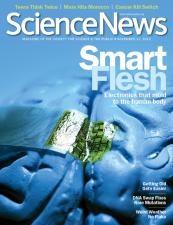
|
|
"Hunting Dark Matter with DNA"
by: Tanya Lewis - October 31, 2012
Physicists racing to detect the mysterious substance known as dark matter are thinking outside the box by looking inside the cell. A new proposal for tracking dark matter particles relies on strands of DNA. All the ordinary stuff in the universe, from the atoms in people to the hot plasma in stars, makes up only about 5 percent of the universe’s mass and energy.
|

|
|
"Gold and DNA Could Create New Dark Matter Detector"
by: Wired UK - July 03, 2012
A combined team of physicists and biologists aim to build a directional dark matter detector using strands of DNA and gold.
|

|
|
"Dark Matter May Collide With Atoms Inside You More Often Than Thought,"
by: Charles Q. Choi - April 27, 2012
"Before we did these calculations, I had been under the impression that on the average, one WIMP would hit one of the nuclei in a human body in about 100 years. In fact I used to joke about the 'WIMP death theory,'" said researcher Katherine Freese, a theoretical physicist at the University of Michigan in Ann Arbor. "Instead, it turns out that the number of WIMP interactions would be so much more frequent — as many as one per minute."
|

|
|
"Dark Matter Hits the Average Human Once a Minute?"
by: Jason Major - April 24, 2012
But WIMPs of certain masses can collide with atomic nuclei on occasion—and now it appears such collisions might happen more often than previously thought. "Before we did this work, I thought a WIMP collided with one of your nuclei once in your lifetime," said Katherine Freese, a professor with the Michigan Center for Theoretical Physics at the University of Michigan. "Turns out it's more likely to be one a minute."
|
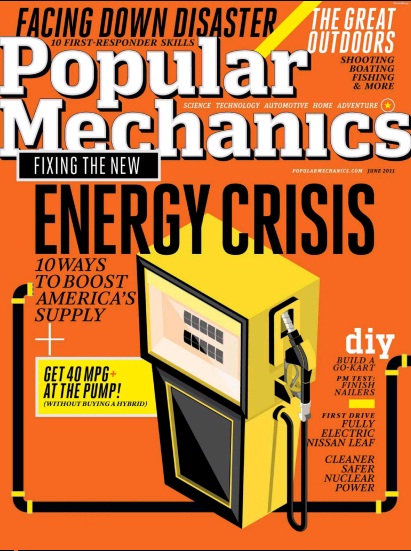
|
|
"Four Ways Scientists Are Trying to Figure Out Dark Matter and Dark Energy"
by: By Skylar Bergl - June 3, 2011
Ninety-six percent of the universe is unknown to humans—scientists can see the effects of dark matter and dark energy, but not directly detect either one. Last night at the World Science Festival in New York, some of the most interesting minds studying these puzzling phenomena gathered to discuss how they're trying to get a handle on the vast majority of the universe that's invisible to the naked eye.
|
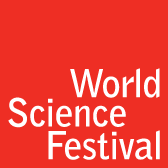 |
|
"A New Piece to the Dark Matter Puzzle,"
by: Katherine Freese - May 6, 2011
For twenty five years I’ve been working on the “dark matter problem”—the question of what makes up roughly 90% of the mass of our Milky Way galaxy as well as every other galaxy. This past week saw intriguing new experimental results that may be telling us something profound about this question.
|
 |
|
"Heart of Darkness Could Explain Sun Mysteries,"
by: Eugenie Samuel Reich - July 17, 2010
Is dark matter lurking at the centre of our bright sun? Yes, say two research groups who believe the elusive stuff is cooling the solar core.
|
|
|
"Shedding LIGHT on DARK STARS,"
page 26, by: Ker Than - March, 2010
Bizarre stars powered by dark matter may have been the first to form after the Big Bang.
(Click here to download the publication as an Adobe PDF file)
|
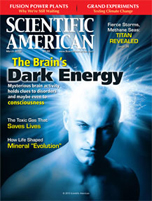 |
|
"Dark Side of Black Holes: Dark Matter Could Explain the Early Universe's Giant Black Holes,"
by: Charles Q. Choi - March, 2010
Massive black holes should not have existed in a universe less than one billion years old, yet they did.
(Click here to download the publication as an Adobe PDF file)
|
 |
|
"Did 'Dark Stars' Spawn Supermassive Black Holes?"
by: Ian O'Neill - February 13, 2010
Although it’s believed the first stars (known as “Population III stars”) were sparked when hydrogen and helium gases cooled enough to clump together, collapsing under gravity and initiating nuclear fusion in the star cores (thus generating heavier elements), there’s another possibility.
|
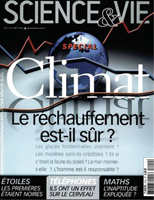 |
|
"Etoiles noires: Elles seraient les premiers astres,"
page 92, par: Mathieu Grousson - Mars, 2010
Faute de pouvoir être observées directement, les étoiles primitives demeurent une énigme pour les scientifiques. Aussi, le scenario de leur formation repose-t-il sur celui des étoiles connues, où la mystérieuse matière noire tient un faible role. Or, voilà qu’une astrophysicienne américaine émet une hypothèse audacieuse: la matière noire serait au coeur même de l’extraordinaire rayonnement de ces premiers astres titanesques.
(Click here to download the publication as an Adobe PDF file)
|
 |
|
Mystery Swirls Around 'Dark Stars'
by: Charles Q. Choi - December 21, 2009
These "dark stars," first born nearly 13 billion years ago, might still exist today. Although they would not shed any visible light, astronomers might detect these invisible giants ? some 400 to 200,000 times wider than our sun and 500 to 1,000 times more massive ? because they should spew gamma rays, neutrinos and antimatter and be linked with clouds of cold, molecular hydrogen gas that normally would not harbor such energetic particles.
|
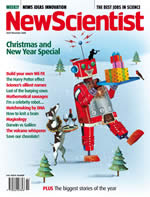 |
|
"Burrowing Black Holes Devoured First Stars From Within,"
by: David Shiga - December 19, 2008
Some physicists speculate that minuscule black holes may have been forged in the very dense soup of matter and radiation that prevailed in the first moments of the universe's existence. If so, these might account for at least some of the invisible dark matter that pervades the universe.
|
 |
|
"First stars 'may have been dark,"
by: Roland Pease, BBC Radio Science Unit - February 19, 2008
According to US scientists, the first stars to appear in the Universe may have been powered by dark matter. |
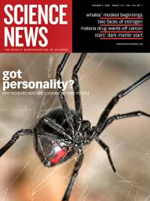 |
|
"Twinkle, Twinkle: Dark Matter may have lit up first stars,"
page 4, by: Sarah C. Williams - January 5, 2008
The earliest stars in the universe might have been beasts of a different nature than modern stars, a new model suggests. While nuclear reactions between ordinary chemical elements fuel the fire of stars like Earth's own sun, mysterious dark matter might have powered the first stars.
|
 |
|
"First stars might have been powered by dark matter,"
by: Maranda Marquit - February 12, 2008
For a long time, scientists have assumed that the very first stars were powered by fusion, in processes similar to what goes on in present day stars. But a new theory is emerging to challenge that view. |
 |
|
"Theory Posits Early Stars Powered By Dark Matter,"
- February 19, 2008
A BBC article highlights a theory that the first stars may have been powered by dark matter. |
 |
|
"Universe's first stars may have been dark,"
by: Maggie McKee - December 3, 2007
Theorists believe the first stars formed in cradles of dark matter, condensing from clouds of gas until their cores became so dense that nuclear fusion ignited. |
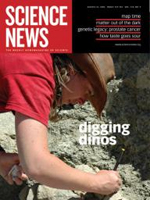 |
|
"Enlightened: dark matter spotted after cosmic crash,"
by: Eric Jaffe - August 26, 2006
An intergalactic collision is providing astronomers with a giant payoff: the first direct evidence of the invisible material that theorists say holds galaxies together and accounts for most of the universe's mass. For some 70 years, cosmologists have agreed that theories of gravity account for observations in Earth's solar system but fail on a larger scale. For example, if those theories held throughout the universe, objects on the outskirts of the Milky Way would rotate more slowly than those toward the center. But they don't.
|
Other Press Coverage:
- New Scientist, March 2005, "Thirteen Things that do not make sense,"
article written by Michael Brooks
- New Scientist, February 2005, "The Future of the Universe," article written by Stephen Battersby
- BBC program on National Public Radio, March 2004, "Dark Matter," (http://www.bbc.co.uk/worldservice/programmes/sci act.shtml), interview with Roland Pease
- BBC online, March 2004, "Earth on the 'Wimp Highway'," http://news.bbc.co.uk/2/hi/science/nature/3573041.stm, article written by Roland Pease
- New York Times, February 2000, "In the Dark Matter Wars, WIMPs beat MACHOs," article written by James Glanz, cover of Science Times including photograph
- Dallas Morning News, February 2004, "If Seeking Dark Matter, Beware Spherical Cows," article written by Tom Siegfried
- Nature, News and Views, May 2004, "Life Can go on Forever," article written by Phillip Ball
- New York Times, November 2003,
"What is Gravity, Really? (25 top Scientific Questions for the Coming Decade),"
article by Dennis Overbye
- New Scientist, August 2002, "Will Life Last Forever?," Cover article for the August edition, written by Phillip Ball
- Dallas News, January 2002, "Cardassian Math adds Dimension to the Universe," article written by Tom Siegfried
- New York Times, February 2002,"Germans’ Claim on Dark Matter is Greeted with Skepticism,"
article written by James Glanz
- New Scientist, July 2002, "Stargazer takes on Grand Theory,"
article written by Eugenie Samuel
- Boston Globe, March 2001, "Dark Matter," article written by Gareth Cooke
- New York Times, Feb. 2000, "Experiments at Stanford Shake Dark Matter Claim," article written by James Glanz
- The Associated Press, March 2000, "Scientists Begin to Shed Light on Dark Matter," article written by Matthew Fordahl
- Space.com, April 2000, "Feeling Around for Dark Matter"
- Yahoo News, April 2000, "Shedding Light on Dark Matter"
- Scientific American, May 2000, "What’s the Matter?, " article written by George Musser
- Cosmiverse.com, April 2000, "Lighting up Dark Matter"
- Dallas Morning News, July 5, 1999, "Stretching your Brane: Hidden Space Dimensions may permit Parallel Universes, Explain Cosmic Mysteries," article written by Tom Siegfried
- Dallas Morning News, February 22, 1999, "Mirror, mirror out in space may solve MACHO mystery," article written by Tom Siegfried
- Scientific American, 1999, article on “Dark Matter"
|
|
|

